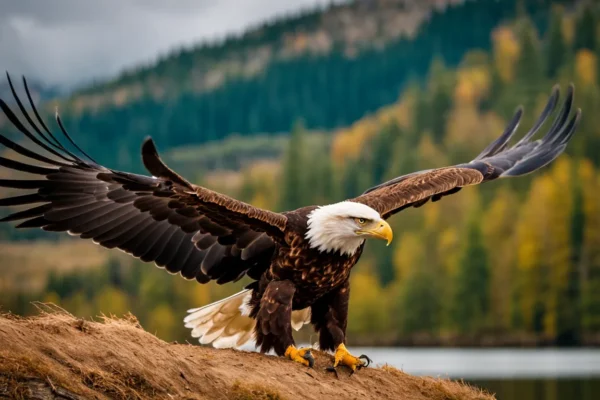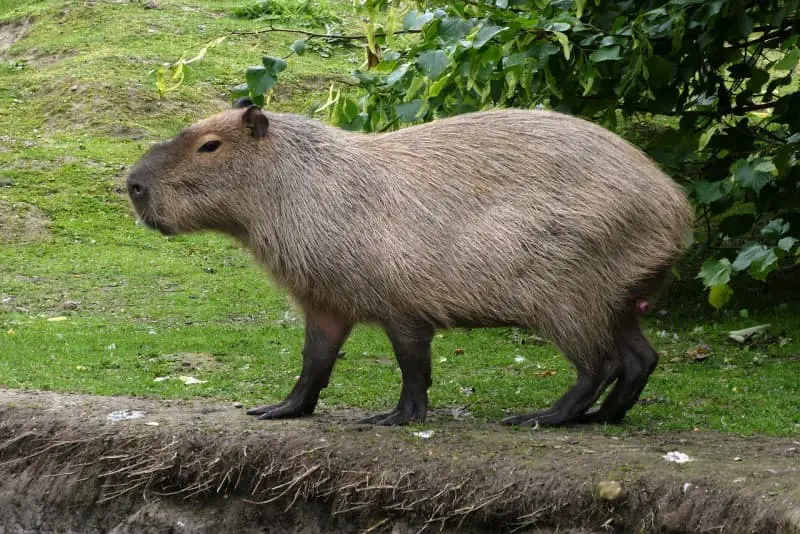A little yellow bird would sometimes appear in Charles M. Schulz’s Peanuts comic strip and interact with characters like Snoopy and Woodstock. This nameless bird became a landmark in the Peanuts universe because to its adorable appearance and endearing behaviors. However, just what was it?
Continue reading to discover the history and real identity of this lovable yellow cartoon bird.
This is a simple response in case you’re pressed for time: A canary, especially patterned after the American goldfinch, is the yellow bird from Peanuts. Although Charles Schulz never gave the bird a formal name, its appearance and habits clearly imply that it is a goldfinch.
History and Significance of the Yellow Bird: Its Initial Occurrence in the 1960s
In the 1960s, the golden bird, popularly known as Woodstock, originally appeared in the Peanuts comic strip. Charles M. Schulz created Woodstock, who was instantly adored by fans. Readers were charmed by Woodstock’s charm and charisma despite his little stature and incoherent speech.
The Peanuts group took on a new dynamic with the arrival of Woodstock. Woodstock had a special function, but the other characters each had their own individual characteristics. Charlie Brown, the comic strip’s main character, and the bird frequently had lighthearted and humorous exchanges.
By including Woodstock into the Peanuts world, Schulz was also able to delve into topics of companionship and friendship. Readers are reminded that real friendship knows no bounds by the close-knit community that Woodstock and the other characters created, despite their disparities in size and communication skills.
Acted as a rival and friend to Woodstock
In the Peanuts comic strip, Woodstock mostly played the role of Snoopy, Charlie Brown’s beagle, as his dependable buddy and companion. Together, the two went on several adventures, with Snoopy often serving as the yellow bird’s trainer.
Nonetheless, competition was also incorporated into the plots by Woodstock’s presence. Readers will find interesting and fascinating situations as a consequence of the bird’s tenacity and persistence, which sometimes led to friendly matches with Snoopy.
The bond between Woodstock and Snoopy served as a lesson on the value of friendship and constructive rivalry. Readers were reminded via their lighthearted exchanges that it is possible to promote mutual support and rivalry while yet encouraging personal development.
Recognizing Physical Features
Tiny Yellow Body
The little yellow body of Charlie Brown’s Yellow Bird makes it easy to identify. It stands out from other birds in the area because to its vivid color. The vivid yellow color gives the character a cheery feel and is evocative of sunlight.
Dim Wings, Pale Belly
The Yellow Bird has a white abdomen and distinctly black wings in addition to its yellow body. These hue contrasts provide an eye-catching visual effect. The white belly gives a hint of softness, and the black wings create a striking contrast with the yellow feathers.
The Yellow Bird has a distinctive and striking appearance due to the mix of hues.
Short Beak with a Conical Shape
The beak of the yellow bird is small and shaped like a cone. Its food is mostly made up of seeds and insects, therefore its beak is ideal for it. The bird’s conical form makes it easy for it to split open seeds and enables it to quickly capture tiny insects.
It’s an adaptation that makes the Yellow Bird more successful in its native habitat.
Dark Crown and Forehead
The Black Crown and the Forehead of the Yellow Bird are some of its defining characteristics. The bird’s overall attractiveness is enhanced by the distinctive pattern these black marks produce on its head. The Black Crown and forehead give the Yellow Bird a sophisticated and elegant look, akin to a fashionable cap.
Behavioral Indications of the Species of Bird
Investigating the behavior of the elusive yellow bird from Charlie Brown might provide important hints towards solving its identification. It might be easier to narrow down the options and identify the species of bird by keeping an eye out for certain behavioral traits.
Love Towards Seeds
A notable behavioral indicator is the yellow bird’s preference for seeds. This bird is often seen using its beak to peck at seeds, whether it is sitting on a tree limb or hopping over the ground. Based on its behavior, the bird seems to be a member of the family that includes sparrows and finches, which are birds that consume seeds.
The Habits of Flocking and Migration
The propensity of the yellow bird to move and form flocks is another intriguing feature of its behavior. The yellow bird may be seen flying in a V-formation with other birds in a number of Peanuts comic strips.
This behavior suggests that the bird is probably a migratory species, as flock migration is a common way for birds to travel great distances safely and with improved navigation. Ducks and geese are two migratory bird species that display comparable flocking behavior.
A Man’s Unique Singing
A very distinguishing behavioral indicator of the species of yellow bird is the singing of the male. The yellow bird is often seen in the Peanuts cartoon singing a happy and beautiful song. The bird may belong to the passerine family, which includes songbirds like canaries and warblers, based on its distinctive behavior.
The male yellow bird distinguishes itself from other bird species with its distinctive and melodious vocalizations.
Even while these behavioral hints help to reveal the identity of Charlie Brown’s yellow bird, it’s crucial to remember that the figure was made just for laughs. The yellow bird is a work of fiction rather than a particular species seen in real life.
However, learning more about this adored character’s behavioral characteristics broadens our enjoyment and knowledge of birds in general.
The American Goldfinch’s Case
Fans of Charles Schulz’s cherished comic strip Charlie Brown have long debated about the identity of the yellow bird. There is a compelling argument to be made for the American Goldfinch, even if some contend that the bird is a canary or a canary hybrid.
Complementing Visual Description
There are a number of significant parallels between the American Goldfinch and Charlie Brown’s depiction of the golden bird. Both birds have striking black caps on their heads, black wings with white patterns, and brilliant yellow plumage.
The bird is similar to the American Goldfinch in both size and form. The yellow bird is clearly an American Goldfinch based on these striking visual similarities.
Typical Characteristics of Behavior
The behavioral characteristics of the yellow bird from Charlie Brown should also be taken into account. The acrobatic flying patterns and affinity for thistle seed eating of American Goldfinches are well-known.
The yellow bird is often seen in the comic strip flying in an exuberant and lively way, which is consistent with how American Goldfinches behave. The behavior connection lends further credence to the theory that the yellow bird is an American Goldfinch.
originally from Schulz’s home state
The man of Charlie Brown, Charles Schulz, grew up in Minnesota. It is noteworthy that Minnesota’s state bird is the American Goldfinch. Because of his strong ties to his own state, Schulz often used Minnesotan themes in his comic strip.
One may argue that Schulz honored his home state and his heritage by designating the American Goldfinch as the golden bird in Charlie Brown.
The Legacy of the Bird in Peanuts
The Yellow Bird has endured in the hearts of Peanuts fans throughout the duration of the comic strip. This well-loved character, who is distinguished by its unique look and kind demeanor, has made several noteworthy appearances and been instrumental in many jokes over the comic strip’s history.
Remarkable Moments and Laughs
In Peanuts, the Yellow Bird (sometimes called Woodstock) first appeared in 1966. From that point on, it developed into a regular figure and close friend of the famous beagle Snoopy. Over the years, their distinct bond and amusing exchanges have given readers many hours of entertainment.
The Yellow Bird’s humor of not being able to speak is one of the most enduring ones. Rather, it uses a variety of bird noises and motions to communicate, which gives its interactions with Snoopy and other characters a funny dynamic.
This unique quality has helped the figure stick in the public eye and has turned into a brand.
The daring nature of the Yellow Bird is the subject of another recurrent joke. Woodstock is often seen taking part in risky pursuits like trying to fly upside down or creating strange nests.
These lighthearted actions not only amuse readers but also emphasize how carefree and joyful the character is.
Durability of the Character’s Popularity
The Yellow Bird, albeit unable to communicate well, has won over the hearts of Peanuts lovers everywhere. Over the years, its charming looks, kind demeanor, and comical antics have won over many fans.
The character’s relatability is what makes them so appealing. As the Yellow Bird often overcomes obstacles like to those faced in daily life, many readers may relate to its hardships and victories.
Whether it’s conquering challenges or discovering happiness in the little things, the character is uplifting and motivating.
Moreover, the impact of the Yellow Bird goes beyond the comic strip itself. Its reputation as an iconic figure has been cemented by its appearances in several Peanuts television specials and motion pictures. The popularity of Peanuts has helped spread its charm and humor to younger generations.
Final Thoughts
The canary-like yellow bird from Peanuts, while it was never given a name, has many characteristics with a male American goldfinch. The classic, whimsical mascot that still makes Peanuts fans smile today was created by Charles Schulz, who was able to capture the endearing actions and look of this backyard bird.



![Can Birds Drink Salt Water? [Explained]](https://birdsology.com/wp-content/uploads/2024/01/14795.webp-600x400.webp)


